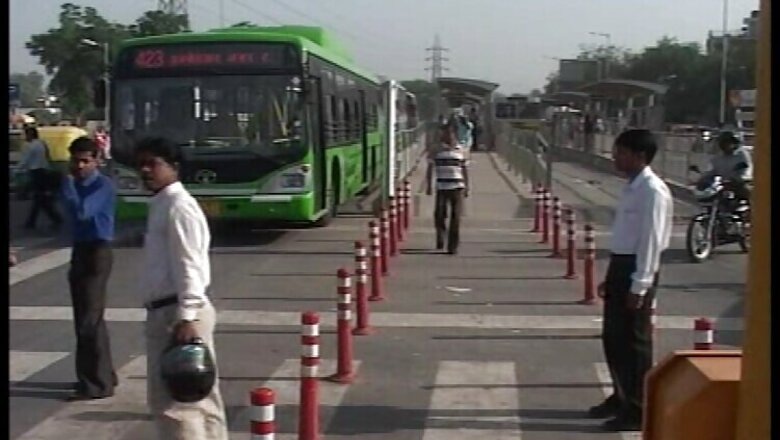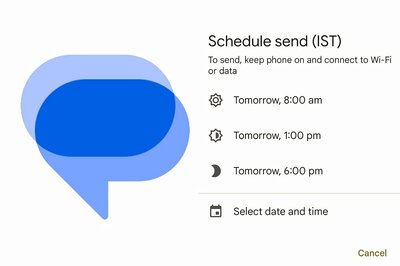
views
New Delhi: Expressing shock at the Delhi government's decision to scrap the controversial Bus Rapid Transit corridor in south Delhi, a green body today termed it as a "regressive" step which would turn the clock back on pollution control efforts in the city.
Centre for Science and Environment (CSE) said that the decision of the Delhi government to give in to the "car lobby" and dismantle the bus corridor to take road space back from buses is "regrettable".
"This is a regressive step and gives a wrong signal when the city is gasping for breath and the lungs of every third child is impaired," said Anumita Roy Chowdhury, CSE's Executive Director.
Chowdhury said CSE was concerned that in this pollution and climate-challenged world, the Delhi government had earned the "dubious" distinction of working against the solution for cleaner air and mobility strategies for the larger public
good.
"This regressive decision has been pushed through even after the latest Economic Survey of Delhi has exposed a drop in bus transport ridership in Delhi. With each bus trip lost to personal vehicles, pollution and health costs will worsen.
"RITES forecasts that even after the full completion of the Metro rail project, Metro ridership will still be at 20 per cent of all trips in 2021. The bulk of the public transport services will have to be bus-based and BRT will help meet the bulk of public transport ridership," she added.
Bowing to public pressure, AAP government yesterday decided to scrap the controversial Bus Rapid Transit corridor in south Delhi built by the previous Sheila Dikshit dispensation at around Rs 150 crore to encourage public transport.
The decision to dismantle the 14.5 km-long corridor between Ambedkar Nagar and Delhi Gate was taken at a Cabinet meeting presided over by Chief Minister Arvind Kejriwal. CSE also said that the scrapping of the corridor went against the basic principles of the National Urban Transport Policy which advises planning of roads for people, not vehicles.
"Dedicated bus lane meant for the 'aam admi' is being taken away with no further plans to create bus corridor network when on all neighbourhood roads and sub arterials one lane from the carriage way along with footpaths are being muscled away for dedicated use of car parking for free," it said.
"In this most polluted city of the world, where the rich have started to flee from the city, people's right to clean air is seriously compromised by this decision," CSE said. The green body said that Delhi has already built roads "obsessively" and put 21 per cent of its total area under roads the highest in the country while the city is still gridlocked and needs a good public transport system with BRT along with walking and cycling infrastructure.
CSE said that RITES has already projected a "frightening" congestion grid of Delhi by 2021 and with more cars on roads, the people-carrying capacity of existing roads is steadily declining. RITES data indicates that on prominent arterial roads,such as Swaran Jayanti Marg in Dhaula Kuan, Rao Tula Ram Marg, Nelson Mandela Marg, Olfo Palame Marg and Outer Ring Road, 70
per cent traffic volume comprises cars which carry only 18 per cent of the total people transported on these roads.
The 10 per cent traffic volume on these roads consists of buses that transport about 60 per cent of the total people. But the city is not willing to give an inch to the buses. The city has to urgently reclaim space from cars on all key roads, CSE said.
Chowdhury said immediately after introduction of this bus corridor in 2009 the average speed of buses increased from 11-12 km/hr to about 19 km/hr and more than 50 per cent of the people traveling on the corridor used these buses.
"The corridor reduced average travel time for bus users by 35 per cent within the pilot corridor. But the city lost guts to carry this beyond the pilot phase as car users pushed back. The 14 new BRT corridors planned as part of the integrated
transport plan has not been taken forward," she said.
The green body urged the Delhi government to finalise time bound implementation of integrated public transport systems with BRT to achieve 80 per cent public transport ridership target by 2020, to effectively implement parking and vehicle taxation policy to restrain car usage and enforce Central Motor Vehicle Rule that states motorists cannot enter pedestrian way



















Comments
0 comment